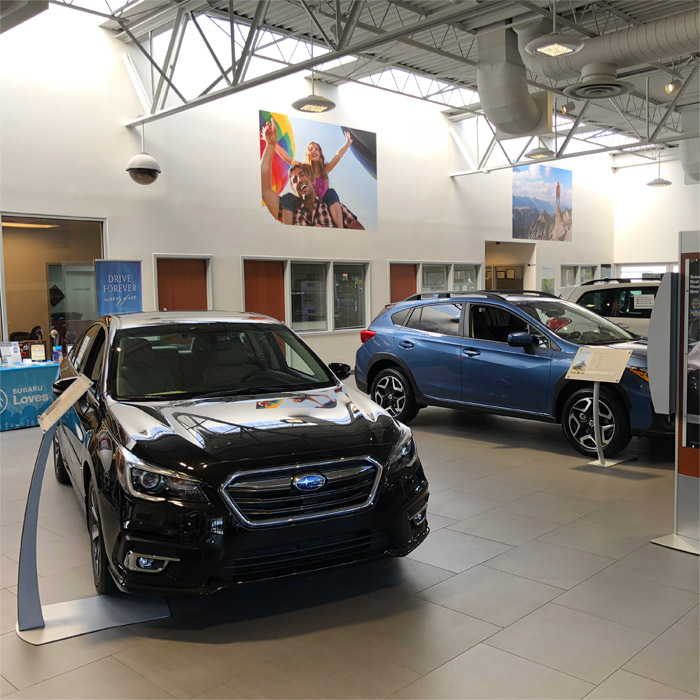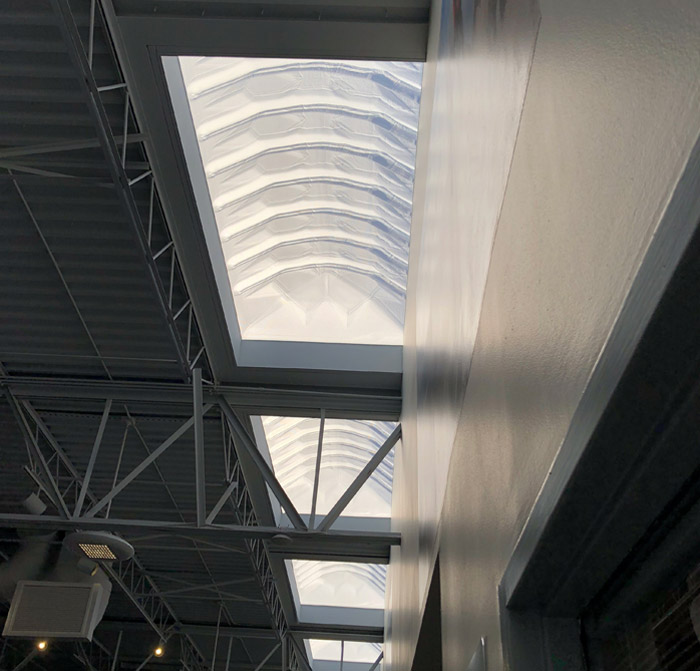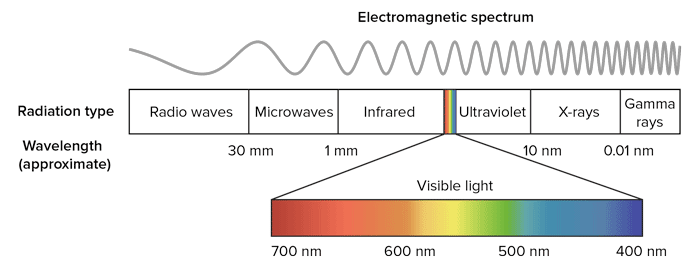This report was prepared by the Eneref Institute.
With one small change to the lighting design in their showroom, one Subaru dealer may sell more cars. Research by Heschong-Mahone Group found that adding daylight to a retail space makes the environment more conducive to a customer s purchasing decision.
Not only should the dealership see a sales increase from the natural lighting, but the skylights will also protect the environment by saving energy. Sustainability is inherent in Subaru’s culture. Headquartered at a zero-landfill office in Cherry Hill, N.J., Subaru of America automobiles are manufactured in zero-landfill production plants. And Subaru’s “Love the Earth” initiative, in partnership with TerraCycle, is designed to reuse and recycle waste instead of landfilling it, creating a sustainable circular economy.
The Right Color Can Sell Cars

Beyond its commitment to sustainability, color is another key way that Subaru differentiates itself from its competitors. The right color on a car can resonate with consumers, explained Kenneth Lin, Director of Product Management for Subaru of America.
“Color can be just as big a draw as the functional aspects of a car,” he said.
Subaru’s Director of Corporate Communications Michael McHale agreed: “Fundamentally, color changes the way a car looks.”
The color of a car is best discerned under daylight, as the Crews Subaru dealership in North Charleston, SC, discovered with the installation of new skylights in their showroom.
“Having skylights in the dealership will allow customers to see the car’s true color,” explained Jane Harrington, manager of Global Color Styling for PPG Industries, a global supplier of automotive paints.
During the development stage of any paint color, automotive companies review samples either in daylight or in a Macbeth light booth—a device that simulates daylight. When a new color is launched, it is again reviewed outside in daylight to confirm that there is color harmony between the body color and all the add-on parts (i.e. fascia, door handles, mirrors, etc.), which are usually sprayed at different assembly plants.
“I think Subaru customers will get a better impression of color with skylights in the dealership,” said Harrington. “Color is one of the first things someone notices about automotive design—they even choose the color before the make or model.”
From a lighting designer’s perspective, cars are capacious objects to illuminate. Compared to, say, spots of track lighting, skylights have a sizeable aperture—or light source—that makes them ideal for lighting larger objects like cars. And, of course, a car’s natural environment is outdoors. Bringing the outdoors inside is the best way to perceive a vehicle’s color.
Skylights Made the Difference
The North Charleston Subaru dealership replaced the older rooftop fiberglass skylights above their showroom with new polycarbonate dome-shaped skylights. Roofing Supply Group recommended VELUX Dynamic Dome skylights for their durability as well as the amount of light they would allow into the showroom.
“It just brightens up the dealership. It brightens everything up,” said Crews Subaru Sales Manager Josh Stringer.
Salesman Shawn Cowgill agreed: “It’s a drastic difference.”
Rhett Crull, Certified Subaru Specialist, said, “It makes a huge difference. It’s way brighter in here, even on cloudy days. But it’s not overbearing… it doesn’t blind me. Bright, but not too bright.”
A 2016 study by LTI Optics, a global leader in optical design, demonstrated the efficiency and lumen output of the polycarbonate dome-shaped skylights installed in the dealership, confirming exactly what the sales team described. LTI Optics used Photopia software to simulate the performance of the skylights.
According to Mark Jongewaard, LTI Optics President, the Dynamic Dome skylights are especially effective when the sun is low in the sky. He noted, “These devices bring in a usable amount of light earlier and later in the day.”
Steve Barteet, the facility director for Crews Subaru, worked with Keating Roofing to adjust the existing roof curbs to fit the standard-sized Dynamic Dome skylights. Barteet was pleased with the results. “We’re getting ready to do another huge 100,000 square feet,” he said. “And I’m so happy with the results that I’ll use the same skylights.”
Daylight Enhances Paint Color and Helps Sell More Cars
Because Subaru uses a thick, high-quality paint—one that contains a sufficient number of pigment particles—virtually all of the light for that pigment’s particular color is reflected before the light has a chance to penetrate down to the car’s metal surface. In other words, we do not see the metal surface at all—only the rich color of the highly pigmented paint, which is significantly enhanced under skylights.
As Crews Subaru Specialist Rhett Crull explained, “The skylights make a difference because you can see the natural color of the car better.”
“Believe it or not,” he continued, “I just sold this car right here. The customer didn’t like the silver shade. But when I walked her around the car under the skylights…it’s a little more blue. So she said, ‘Okay!’”
Mike Driscoll, also a Certified Subaru Specialist, concurred. “It’s important. Before the skylights, I had a customer who said, ‘Is that color too vivid?’ But the car was gray.”
Research by Heschong-Mahone Group found that adding daylight to a retail space makes the environment more conducive to a customer’s purchasing decision. The stores with the most favorable results in the study reported a 40% sales increase.
According to American artist Peter Hite, who uses color to enhance large spaces and whose artwork has been specified by architects in some of the world’s most prestigious corporate lobbies, “I couldn’t imagine buying a new vehicle under artificial lighting conditions. Buying a car is as much an emotional experience as it is an economic decision. Daylight augments and enhances color’s emotional impact.”
Light and Color

The appearance of a car’s color depends on the light used to illuminate the car’s surface paint. Color is not an intrinsic property of paint but rather depends on different kinds of light that illuminate the car. When we perceive the color of a car, what we’re really seeing is the reflection of light modified by pigments within the car’s paint. In fact, color only becomes visible to our eyes when light strikes an object. There is no color without light.
Sunlight is made up of a spectrum of multiple light colors—a fact commonly demonstrated by a simple light prism. Whenever a prism is inserted in a beam of sunlight, the light beam is slowed and bent by the dense medium of the prism. Because each wavelength of color bends at a different degree or angle, each color of light is then visible as part of the familiar spectrum.
Car paint colors appear best under daylight because daylight accurately renders all the wavelengths of light within the visible color spectrum. Not only are all colors represented within sunlight, but they’re also all evenly intense.
“The reason that the cars look better under natural light is that natural light has all of the wavelengths,” explains daylighting engineer Rob Guglielmetti of the National Renewable Energy Laboratory.
For example, unlike sunlight, fluorescent lights emit an irregular light color spectrum—which prevents them from accurately rendering a car’s surface color.
“Electric lights only emit radiation in bits and pieces of the whole visible spectrum,” explained Guglielmetti. “So if a portion of the wavelength isn’t in the light source to begin with, it can’t be reflected.”
This explains why an object’s appearance can differ greatly under various types of electric lighting. Illuminant metamerism occurs when the colors of two objects match each other under one light source but don’t match under another; due to the limited spectrum emitted by the light sources themselves, our eyes actually see a different color.
“In the 70s, parking lots were using low-pressure sodium lights that only emitted light in very tiny slices of the visible spectrum. And so people couldn’t find their cars in the parking lots because they all looked the same color,” said Guglielmetti.
Skylight Protection From UV Light
Not all the daylight will make it through the skylights and onto the cars on the showroom floor. A very small amount of sunlight will be absorbed by the polycarbonate glazing, resulting in a slightly increased heat of the plastic. And some of the daylight will be reflected off the polycarbonate surface, depending on the angle of the sun. Furthermore, although not visible, UV light from the sun—which carries more energy than visible light—can harm some plastics over many years of outdoor exposure.
However, Dynamic Dome skylights were specifically designed to allow the maximum amount of visible sunlight into the space at all angles of sun in the sky, while at the same time protecting the polycarbonate from the sun’s UV light. The advanced UV protection was developed by Covestro, a leading supplier of polycarbonate to the skylight industry.
“Some people have a negative connotation of polycarbonate due to old polycarbonates that yellowed faster over time,” explained Ted Trautman, Technology Director for Covestro North America. “But our polycarbonates have a UV cap layer applied to them that actually guards against UV light.”
Pigments Absorb and Reflect Colors
Like all paints, automobile paint is composed of a base (or substrate) in which fine color pigment particles float. Pigments are molecules that absorb specific wavelengths of light and reflect others; the color we see is simply the net effect of all the wavelengths of light that are reflected back at us.
Pigments absorb colors selectively and transmit others. When pigments are illuminated with a broad spectrum of light—such as sunlight—a set of wavelengths gets absorbed while the rest gets reflected. It’s the portion of waves that are reflected that gives us the particular wave frequencies that our eyes perceive as color. Red car paint, for example, has the property of absorbing all the colors of the spectrum except red, which it reflects. When the car’s surface is painted black, on the other hand, practically all the light is absorbed by the pigment, reflecting very little.

Every color has its own individual light wavelength, just as each note on the piano has its own individual sound wavelength. All light colors travel as waves in specific energy packets called photons. In the case of cars under skylights, it’s the interaction of photons in sunlight with electrons in the paint’s pigment molecules that ultimately causes the color we see.
In all molecules, electrons exist within certain orbital levels around an atom’s nucleus. If a photon in the sunlight with the right amount of energy comes along to boost the electron into the next energy level orbital, the atom’s electron can absorb that photon’s energy color. Any photon—or wave—of light that does not have just enough energy to boost an electron into a higher orbital cannot be absorbed by the atom. That wave is then ignored and that light wave’s color is reflected.
We see only the light waves that are reflected by the pigments; this is what pigments do—reflect and absorb specific light colors. Since the distance between orbitals varies across pigment molecules, different wavelengths are absorbed or reflected in different pigments. That variance in molecular structure is what creates our wide variety of colors.